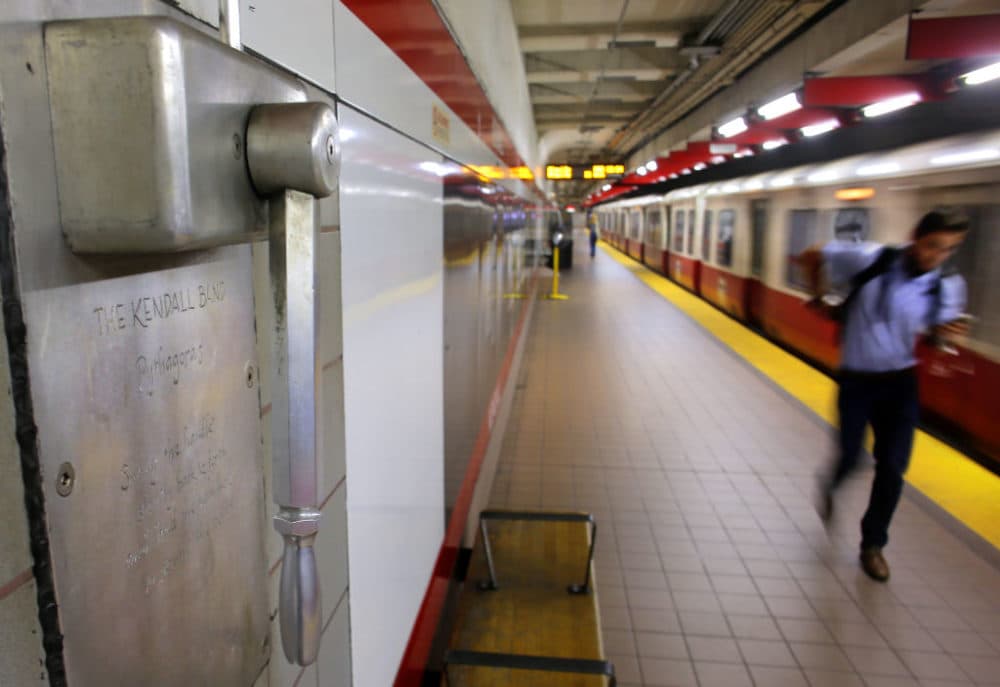Advertisement
Commentary
How the MBTA could help Mass. combat the opioid epidemic

Like most Bostonians, we’ll agree that the MBTA needs an upgrade. But we’re not talking about more reliable transit times. We’re talking about how the T can help ease the city’s opioid epidemic.
In 2017, Cambridge and MIT police received a call about a 37-year-old man — we’ll call him Jeff (to protect his privacy) — who was potentially intoxicated and lying on the tracks of the Kendall Square T station.
Police quickly responded and discovered that Jeff had overdosed on narcotics. They immediately administered naloxone, a lifesaving drug that temporarily reverses the effect of opioids, and Jeff survived.
He was extremely lucky: People who have overdosed on opioids have just three to five minutes from the time of an overdose to receive help before experiencing irreversible brain damage, or worse, death. In situations where the police officer or other emergency personnel are not near T stations — which have become hotspots for overdoses — help often comes too late.
In situations where the police officer or other emergency personnel are not near T stations — which have become hotspots for overdoses — help often comes too late.
Last year, nearly 2,300 people died from opioid overdose in Massachusetts, of which Boston and Cambridge made up a significant proportion. Data from the Cambridge Health Alliance, a public healthcare system, show that overdoses in Cambridge are overwhelmingly clustered in or around T stations.
Despite the MBTA police being mandated to carry naloxone since 2017, the number of overdose incidents in Cambridge-based Red Line stations has risen year over year, reaching a record high in 2021, according to data we requested and eventually obtained from the Cambridge Department of Public Health.
Making naloxone easily accessible at T stations could be a public health success. In one study based in Cambridge, a team of researchers led by Dr. Scott Weiner from the Brigham and Women’s Hospital, recruited 50 bystanders from a public location in Cambridge with a high local incidence of opioid overdose on one weekday in April 2017. The study found that 98% of bystanders correctly administered naloxone in a simulated scenario, and that the median time until naloxone administration fell from over five minutes to just about three minutes, as compared to average emergency medical services response times when a nearby public source of naloxone was available and instruction was given.
Advertisement
Yet, so far, naloxone has not been made widely available to the public.
How can our state get this done? The MBTA, in collaboration with first responders and city departments of public health, could pilot the introduction of naloxone boxes — which have been implemented elsewhere in Massachusetts, including Cambridge and Boston city buildings, public libraries, and schools in Easthampton — at T stations, such as at the Red Line stations of Harvard, Kendall/MIT, and Central. An education campaign that informs the public of this resource and destigmatizes substance use disorder could simultaneously be trialed.
Making naloxone easily accessible at T stations could be a public health success.
After several other considerations, including integrating the location of the boxes with local 911 operators, designing robust replacement strategies to ensure that naloxone is present when needed, and posting instructions for how to use the naloxone in an emergency, bystanders would be empowered to administer naloxone in the event of an overdose.
One might argue that theft of the freely accessible naloxone is a serious drawback of such initiatives, but past public access naloxone programs implemented by Boston Veterans Affairs (VA) Hospitals, the city of Cambridge in public city buildings, and other state organizations in libraries, bus stops and college campuses suggest that the risk of theft is minimal. Despite making naloxone accessible for more than five years now, Pam Bellino, one of the program coordinators at the Boston VA, reports that not a single dose has ever been taken for non-emergency use. Moreover, if naloxone is taken for later use, the drug cannot be abused or easily sold.
Critics might also argue that instituting such programs would encourage the use of illicit drugs in or near the sites where naloxone is available. Once again, looking at past initiatives allays such concerns. The Boston VA equipped over 1,000 wall cabinets in VA hospitals with naloxone and reported additional overdose reversals, without an apparent increase in opioid use.
Access to naloxone can mean the difference between life and death. Implementing public access naloxone in T stations would help people struggling with substance use disorder survive, and enable our state to better combat the opioid epidemic.
It’s an important upgrade, among many, that the T needs.
David Velasquez is a student of medicine, public policy and business at Harvard University, and an advisor of the Public Access Naloxone Project.
Jay Garg is a student at Harvard College and the policy chair of Harvard College Overdose Prevention and Education Students.
Sajeev Kohli is a student at Harvard College and the public access naloxone project lead at Harvard College Overdose Prevention and Education Students.